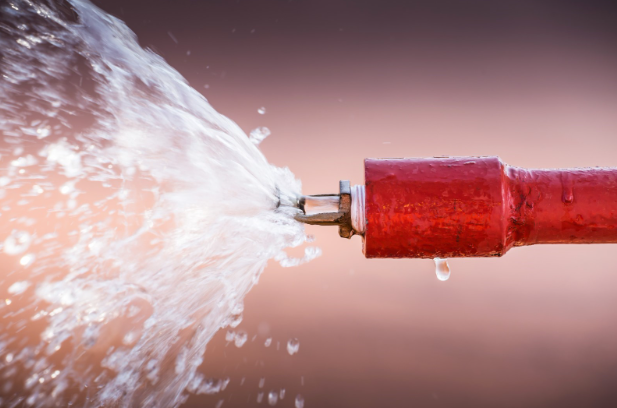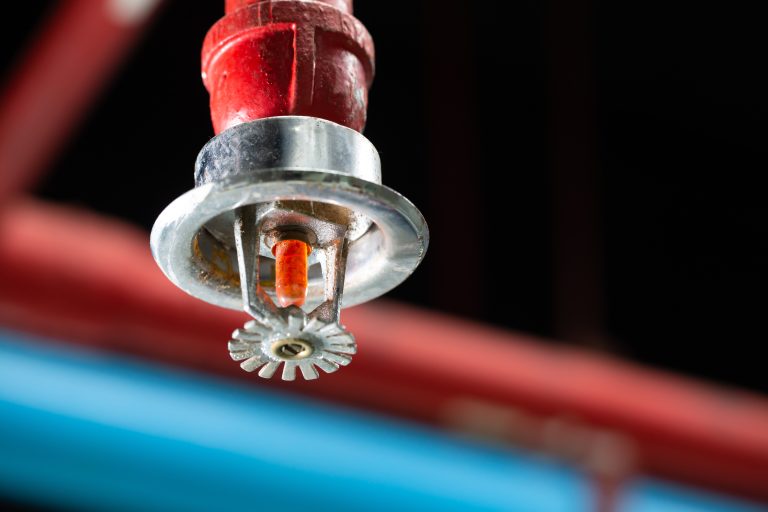The History and Future of Fire Protection Systems
 From ancient cities to modern skylines, fire has always been a threat–and figuring out how to control it has shaped how we live, build, and protect what matters most. Fire protection systems have always been on the frontlines. But they didn’t start out as the high-tech, code-compliant systems we know today.
From ancient cities to modern skylines, fire has always been a threat–and figuring out how to control it has shaped how we live, build, and protect what matters most. Fire protection systems have always been on the frontlines. But they didn’t start out as the high-tech, code-compliant systems we know today.
When did fire protection systems originate? How has technology shaped what we’ve come to know about these firefighting agents? And, maybe most importantly, what’s in store for their future?
Whether you’re researching commercial fire protection systems, exploring clean agent fire suppression options, or just curious about how automatic sprinkler systems came to be, let’s take a walk through history and see how far we’ve come and where we’re going next.
The Early Days: Water and Manual Efforts
The history of fire protection systems begins with the most basic element: water.
For centuries, the primary method of extinguishing fires was the manual application of water, using buckets, pots, and, eventually, hand-pumped hoses. Ancient communities would even form bucket brigades, passing water hand-to-hand to douse flames.
However, despite their forward-thinking and hard work, the efficiency of these early methods was limited. Effectively extinguishing flames relied on the speed and endurance of the human chain and the proximity to a water source, which wasn’t always easy to come by.
The 19th Century: The First Fire Extinguisher
The 19th century marked a significant turn in fire protection technology with the invention of the fire extinguisher.
In 1818, British Captain George William Manby developed the first portable fire extinguisher, which used potassium carbonate solution propelled by compressed air. This seminal innovation was a revolutionary step that shifted the paradigm of fire response from reactive bucket brigades to proactive fire control.
Manby’s design enhanced the immediacy and effectiveness of firefighting efforts and set a precedent for safety innovation, inspiring a wave of other advancements.
The Rise of Chemical Solutions
Following Manby’s invention, the 19th and early 20th centuries saw the introduction of chemical-based fire extinguishers. Soda-acid, foam, and carbon tetrachloride extinguishers were developed, each utilizing different chemical reactions to suppress fires.
These advancements allowed for more efficient and effective fire suppression methods capable of addressing various types of fires, including those that water could not extinguish.
The Era of Automatic Sprinkler Systems
Perhaps the most revolutionary development in fire protection technology was the introduction of the automatic sprinkler system.
Patented in 1872 by Philip W. Pratt and later improved by Henry S. Parmalee, the automatic sprinkler system provided a method for continuous fire protection within buildings. These systems activate when heat reaches a certain threshold, releasing water directly over the fire.
Today, commercial fire sprinkler systems are a cornerstone of building safety, required by code in many industries, and proven to reduce fire-related injuries and property loss.
Halon and Clean Agent Systems
By the late 20th century, halon gas systems became popular for protecting sensitive equipment in data centers, control rooms, and museums.
However, due to environmental concerns regarding halon’s ozone-depleting properties, the search for alternative “clean agents” such as FM200 and NOVEC 1230 became a priority.
These clean agents provide effective fire suppression while being environmentally friendly, representing a significant step forward in balancing safety and environmental stewardship.
The Digital Age: Smart Fire Protection Systems
The advent of digital technology has ushered in a new era for fire protection and suppression systems. Today’s systems use intelligent fire detection, IoT-enabled sensors, and automated alerts to detect and respond to fires faster and more accurately. These systems can differentiate between different types of fires, adjusting their suppression method accordingly.
Plus, they are capable of alerting emergency services and building occupants instantly, facilitating a rapid and coordinated response.
What’s Next in Fire Protection Technology?
The future of fire protection is focused on further innovations in automation, environmental sustainability, and effectiveness. Every day, research and development continue to push the boundaries of what’s possible, exploring new materials, technologies like AI-driven systems, and fire protection methods.
It’s likely that greener alternatives will continue to gain traction with the development of non-toxic, environmentally friendly suppression agents. This direction points to a new standard in fire protection—systems that are not only powerful and precise but also built with the planet in mind.
Why Fire Suppression Systems Matter and How Encore Can Help
The history of fire protection is still a story of progress. At Encore Fire Protection, we’re proud to be part of that ongoing evolution, helping businesses from Maine to Florida protect what matters most with fire protection systems that are smarter, safer, and built for the future. From design and installation to testing and inspection, service, and repair, we’ve got you covered every step of the way.
Want to see how far fire protection has come—and how it can work for your business? Contact us today!
Latest Posts
Your Top 4 Commercial Kitchen Ventilation Questions Answered
If you can’t stand the heat, get out of the kitchen. Or maybe you have a ventilation problem. A properly functioning kitchen ventilation system…

AI, IoT, and Drones: 4 Emerging Trends in Fire Sprinkler Technology for 2025
Fire protection is evolving fast — and if your fire sprinkler system isn’t keeping up, your safety strategy might be stuck in the past. In…

Fire Sprinkler Systems 101: The Five Types Every Business Owner Should Know
When fire strikes, sprinkler systems aren’t just a safety feature — they’re your first responder. Think of them as your building’s built-in firefighters, ready to…

